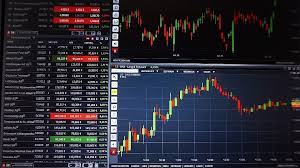
What is Forex Trading?
Forex trading, or foreign exchange trading, is the act of buying and selling currencies in the global market. The Forex market is decentralized and operates 24 hours a day, five days a week, making it one of the largest and most liquid financial markets in the world. For those looking to delve into this fast-paced trading environment, what is forex trading https://acev.io/ serves as an excellent resource for gaining insights and trading tools.
How Forex Trading Works
The fundamental principle behind Forex trading is the exchange of one currency for another at an agreed price. Currencies are traded in pairs; for example, the euro against the US dollar (EUR/USD). When you speculate that one currency will strengthen against another, you buy that currency pair. Conversely, if you believe that a currency will weaken, you sell that pair.
Understanding Currency Pairs
In Forex trading, currencies are always quoted in pairs. The first currency in the pair is known as the base currency, and the second is the quote currency. The price reflects how much of the quote currency is needed to purchase one unit of the base currency. For instance, in the EUR/USD pair, if the exchange rate is 1.20, it means 1 euro is worth 1.20 US dollars.
Types of Currency Pairs
- Major Pairs: These include the most traded currencies in the world, such as EUR/USD, USD/JPY, and GBP/USD.
- Minor Pairs: These include currencies that are less liquid and not as frequently traded, like NZD/CAD or EUR/GBP.
- Exotic Pairs: Involves a major currency paired with a currency from a developing economy, such as USD/TRY (Turkish Lira).
The Mechanics of Forex Trading
Forex trading is conducted over-the-counter (OTC), meaning transactions are executed through electronic networks rather than centralized exchanges. Market participants include banks, financial institutions, corporations, and individual traders.
Strategies for Forex Trading
Successful Forex trading requires a sound strategy. Traders often employ various strategies to capitalize on market movements:

- Scalping: A strategy that involves making numerous trades throughout the day to capture small price changes.
- Day Trading: This involves entering and exiting trades within the same day, ensuring that no positions are held overnight.
- Swing Trading: Traders hold positions for several days or weeks, aiming to profit from anticipated price swings.
- Position Trading: A longer-term strategy where traders hold their positions based on long-term market trends.
Key Factors Influencing Forex Prices
Several factors can impact currency prices, including:
- Interest Rates: Central banks influence currency prices through monetary policy decisions regarding interest rates.
- Economic Indicators: Reports on GDP growth, unemployment rates, and inflation can affect overall market sentiment.
- Political Stability: A country’s political landscape can have significant effects on currency strength and stability.
- Market Sentiment: Trader perceptions and market psychology can lead to fluctuations in currency rates.
Tools and Resources for Forex Traders
To be successful in Forex trading, traders often utilize various tools and resources, such as:
- Forex Brokers: Licensed institutions that facilitate currency trading for individuals and institutions.
- Trading Platforms: Software that allows traders to analyze market trends and execute trades.
- Forex Charts and Technical Analysis: Tools that help traders evaluate price movements and trade accordingly.
- News Feeds: Keeping up with economic news and geopolitical events is crucial for making informed trading decisions.
Risks Involved in Forex Trading
While Forex trading can be highly profitable, it also carries significant risks. Understanding these risks and implementing risk management strategies is essential for any trader, especially beginners. Some common risks include:
- Market Risk: The risk that currency prices will decline, resulting in losses.
- Leverage Risk: While leverage can amplify profits, it can also increase potential losses.
- Liquidity Risk: Occurs when a trader cannot buy or sell an asset quickly without affecting its price.
Getting Started with Forex Trading
If you’re interested in entering the Forex market, here are steps to get you started:
- Educate Yourself: Learn about the currency pairs, trading strategies, and market trends.
- Choose a Reputable Broker: Research and select a broker that suits your trading style and requirements.
- Open a Trading Account: Register with your chosen broker and open a trading account—many offer demo accounts for practice.
- Develop a Trading Plan: Create a plan that outlines your trading goals, risk tolerance, and strategies.
- Start Trading: Begin trading with small amounts to minimize risks while developing your skills.
Conclusion
Forex trading presents a dynamic and potentially rewarding opportunity for traders. Understanding the fundamentals of the market, employing effective strategies, and being aware of the associated risks are crucial for anyone looking to succeed in Forex trading. With practice, education, and a solid trading plan, you can navigate this exciting market and work towards achieving your financial goals.

